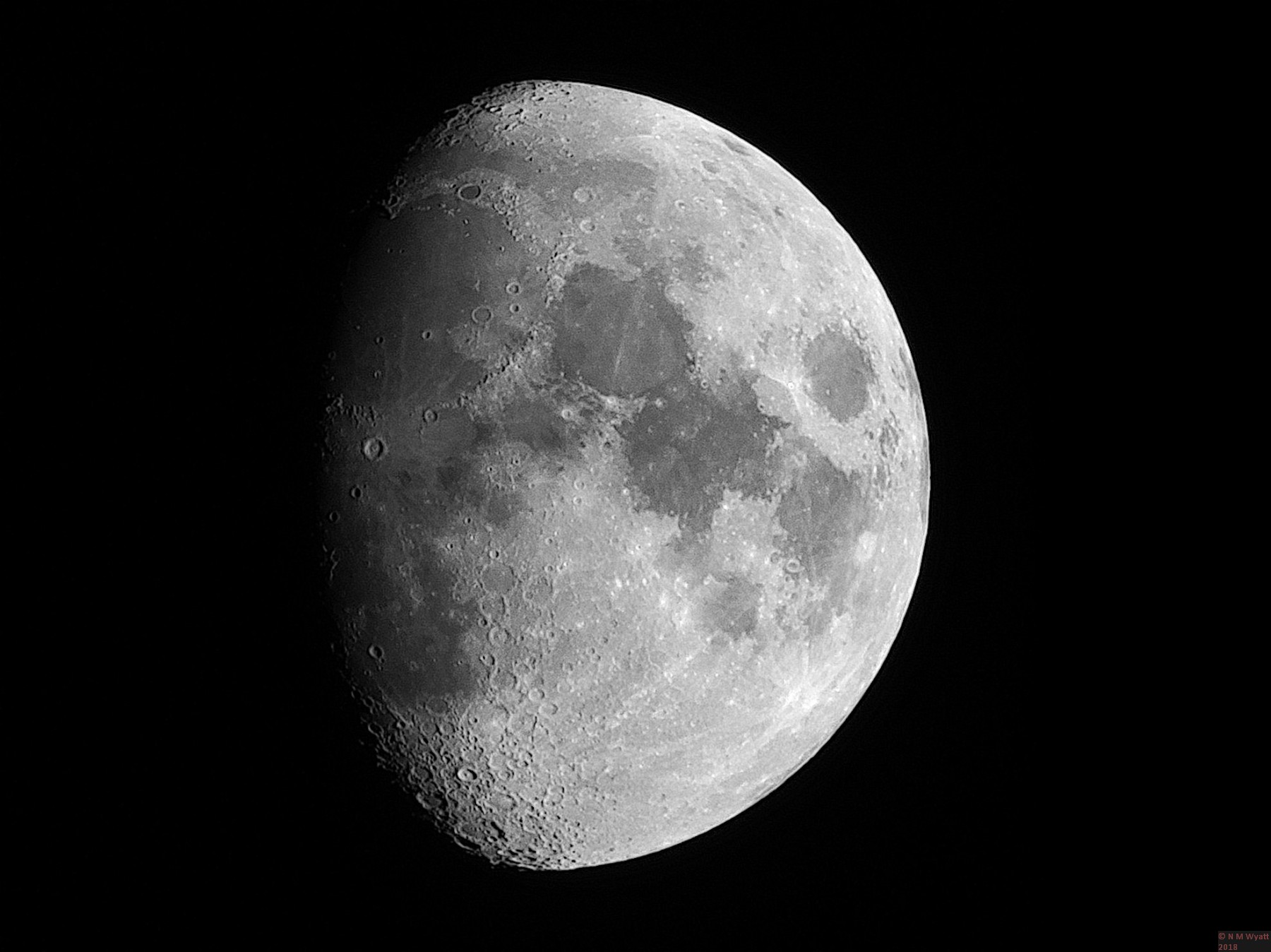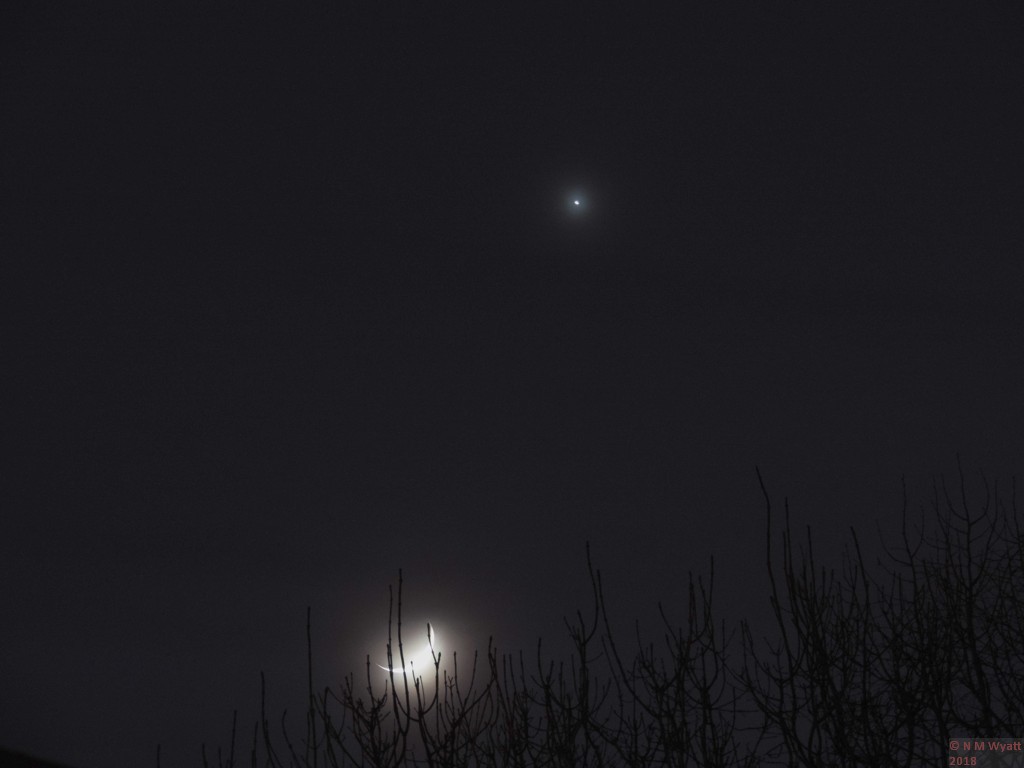If you find this website useful, please check out my books or visit my Amazon Author page. Or even Buy Me a Coffee!
Astronomy
Astrophotography
You are never too old to learn, and one of the thing that has opened my eyes has been discovering the quality of astronomical images that can be produced by amateurs with very modest equipment. By using digital cameras and image processing software it's a realistic ambition to produce images that compare favourably with those produced by the world's biggest telescopes fifty years ago - right in your back yard!
This website does not showcase the best astronomical pictures on the internet! It's a selection of pictures I have taken myself with basic equipment and free software. Producing images like these below, or even better ones, is within your reach!
Most importantly, you don't have to spend a fortune. My first serious scope, mount and tripod cost £180 on Ebay. I spent £40 on a more solid tripod, and about £200 on various bits and pieces including books and an ancient Canon EOS DSLR and a seconhand Microsoft HD Webcam. The results shown before are some of my best so far, and will be updated from time to time.
Perhaps the easiest target in the sky is the moon. You can get good pictures with any long or zoom lens, this is a 'stack' of six pictures taken with an ordinary bridge camera:
A gibbous moon photographed on the isle of Skye.
Follow the links below for introductions to some of the other things you can image in the night sky:
A Conjunction of Moon and Venus
M86 is a large elliptical galaxy in Markarian's Chain. It has a large blue-shift indicating it is heading towards Earth, although it is on the far side of the Virgo Cluster. Like many other large ellipticals it has many companion globular clusters, over 2,500.
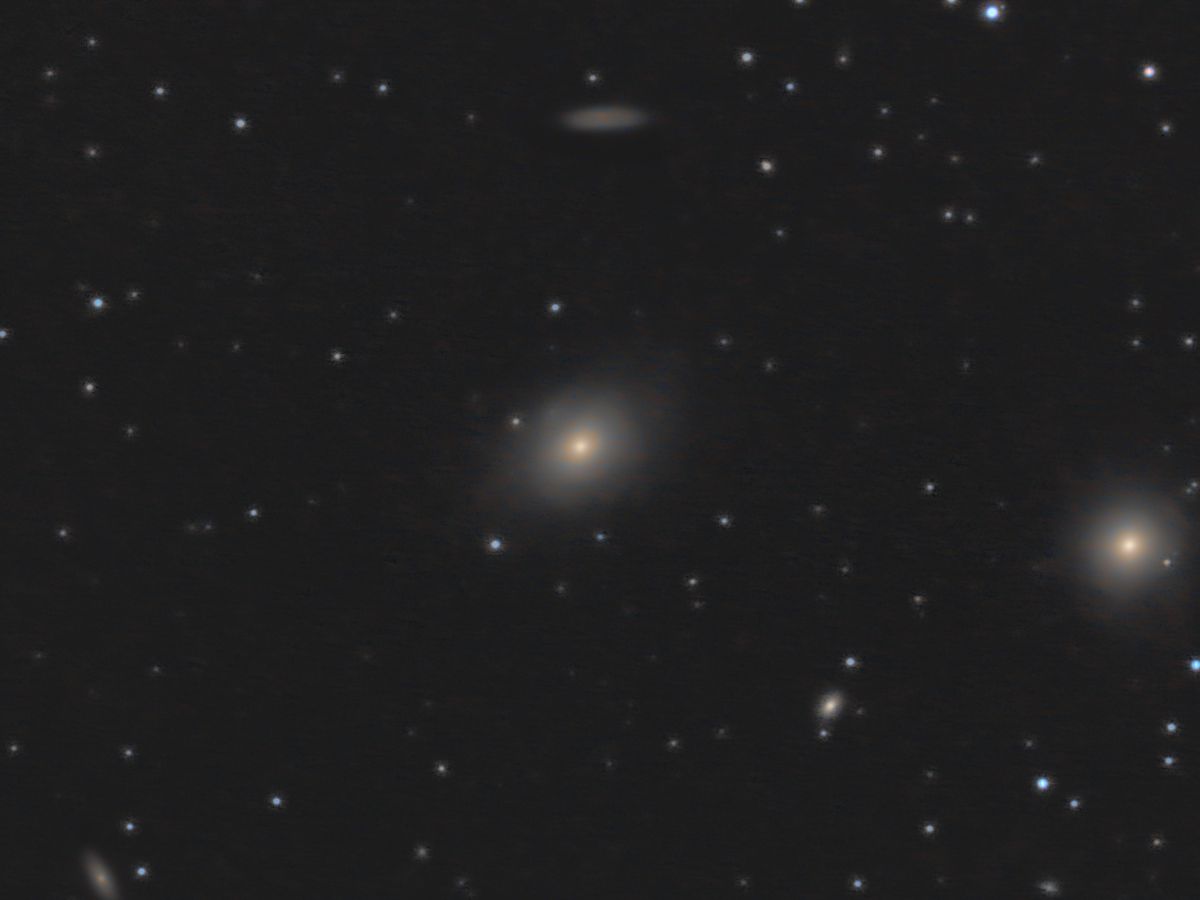
M86 and other nearby members of Markarian's Chain
- Details
- Category: Astrophotography
M85 is one of the outliers of the Virgo cluster of galaxies. Despite its simple appearance, detail studies have revealed it has a complex structure. Close to it lies the spiral galaxy NGC4394, which is assumed to be a companion galaxy of M85.
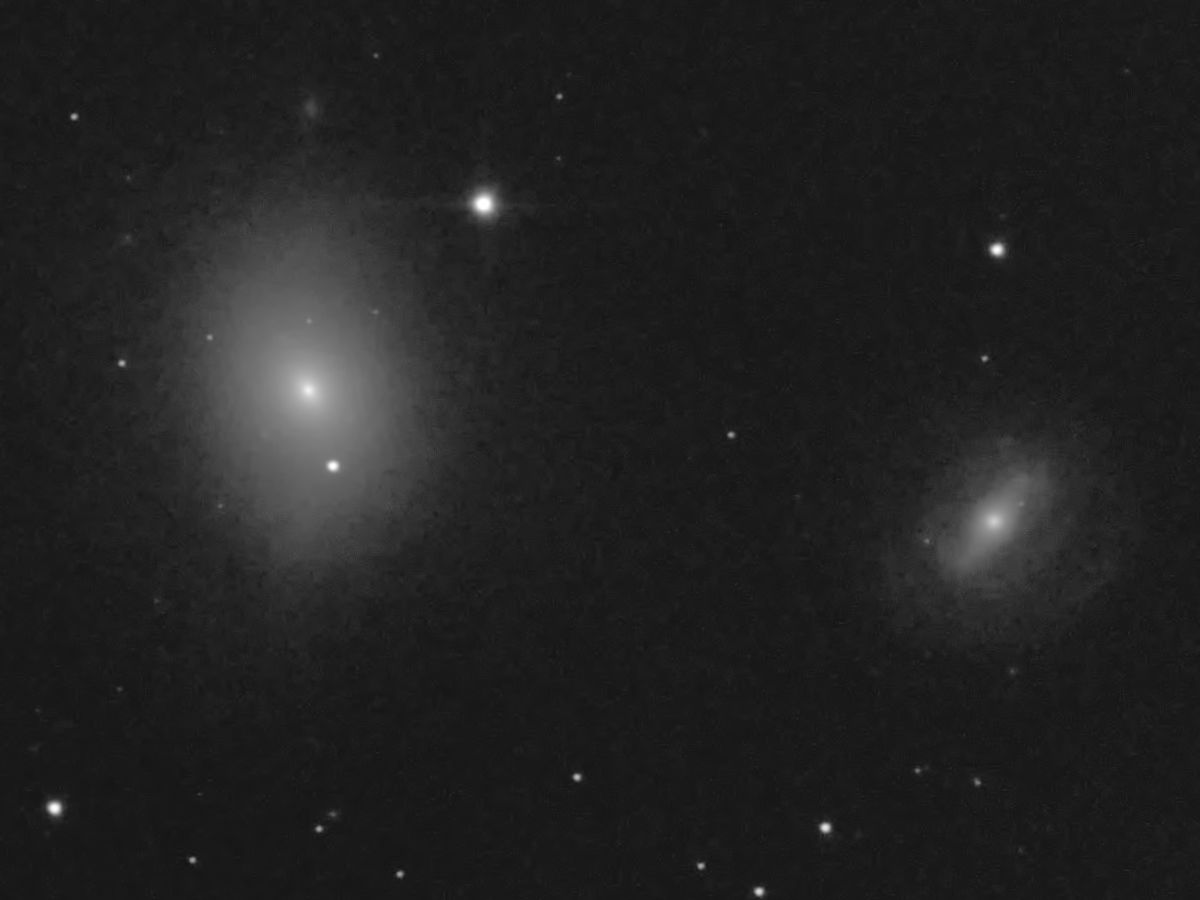
M85 and NGC 4394
- Details
- Category: Astrophotography
M84 is one of the bright objects in the Markarian's Chain of galaxies in the Virgo Cluster. It is a giant elliptical galaxy and the Hubble Space Telescope has detected two relativistic jets of matter emanating from its core at near light-speed - see M87 for an image of a relatavistic jet.
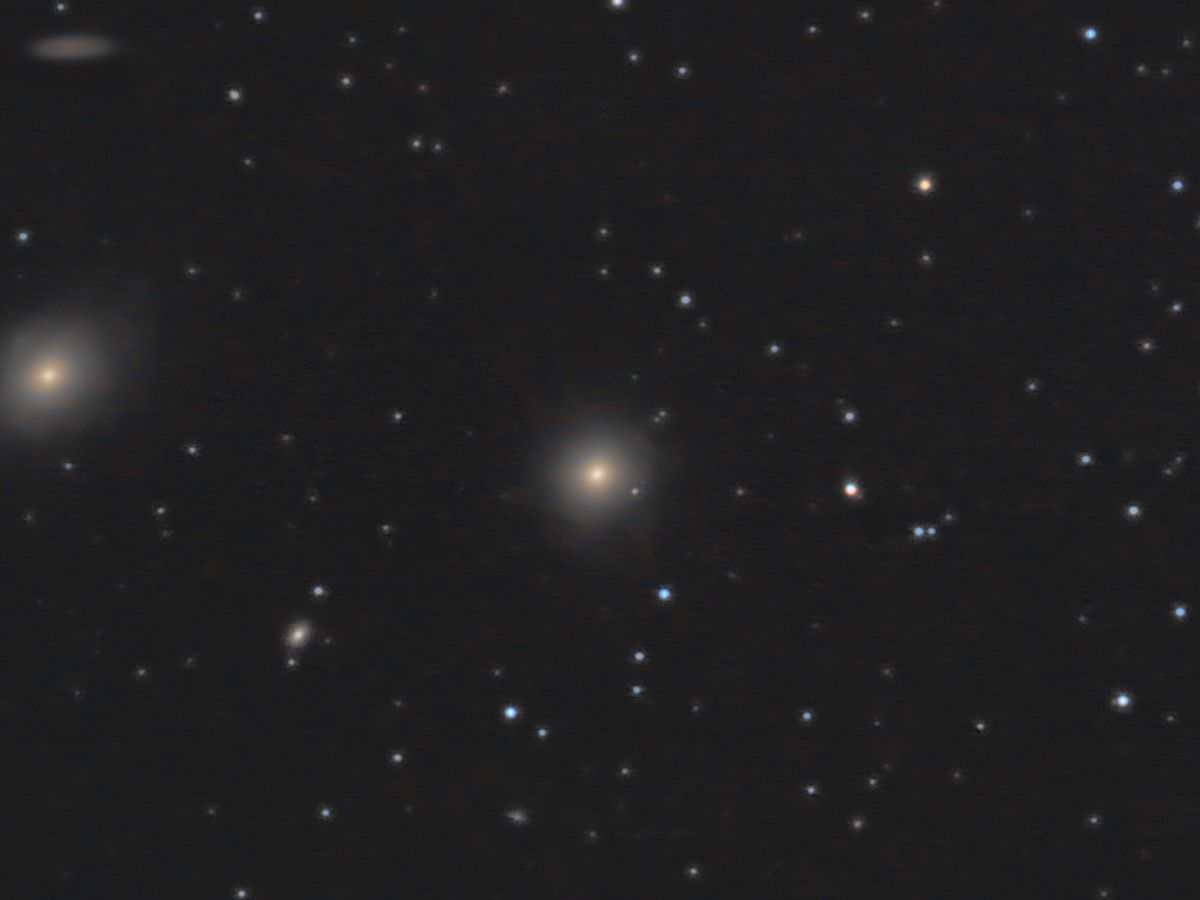
M87 elliptical galaxy
- Details
- Category: Astrophotography
M82 is an exceptionally bright 'starburst' galaxy in Ursa Major. It lies close to Bode's Galaxy, M81. Observations in infra-red show that it is an edge on spiral galaxy. Narrowband Hydrogen alpha images show perpendicular bright tarils of Ha leading from the core, only faintly visible in the image below.
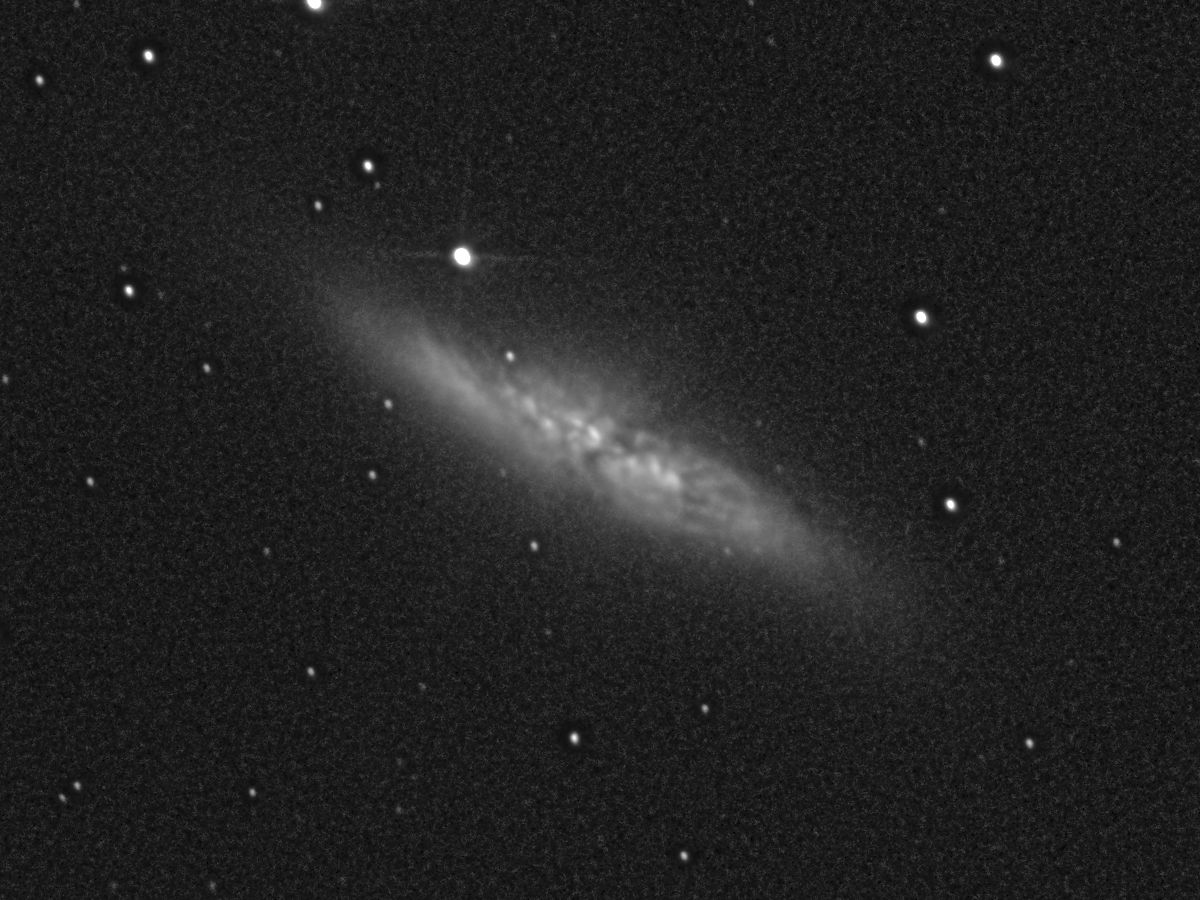
M82 the Cigar Galaxy
- Details
- Category: Astrophotography
Bode's Galaxy or Bode's Nebula is about half the size of the Milky Way, but being relatively close it appears large and is well studied. It is a 'grand design spiral' with a large, bright core.
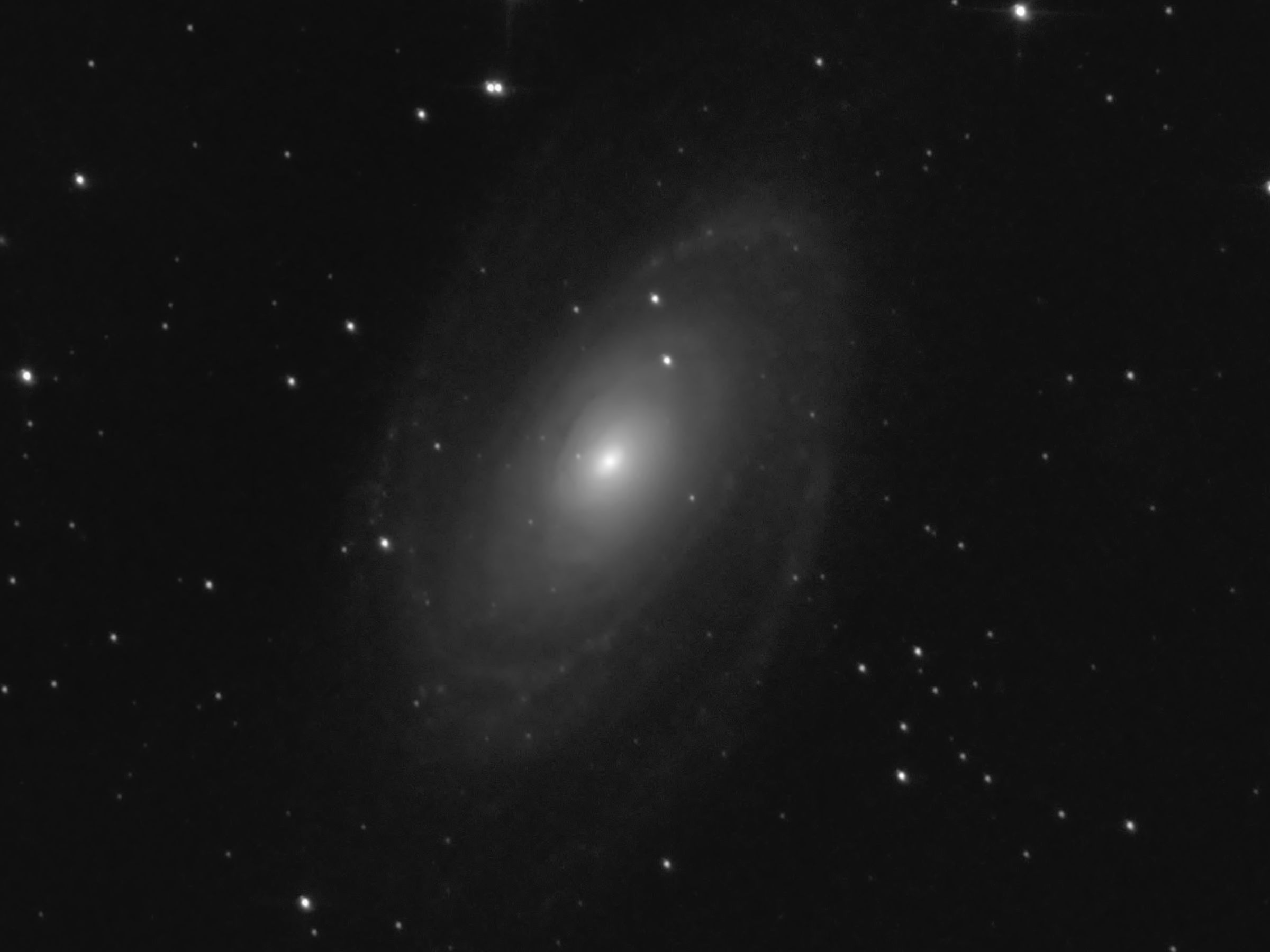
M81, Bode's Galaxy
- Details
- Category: Astrophotography
Page 6 of 23

